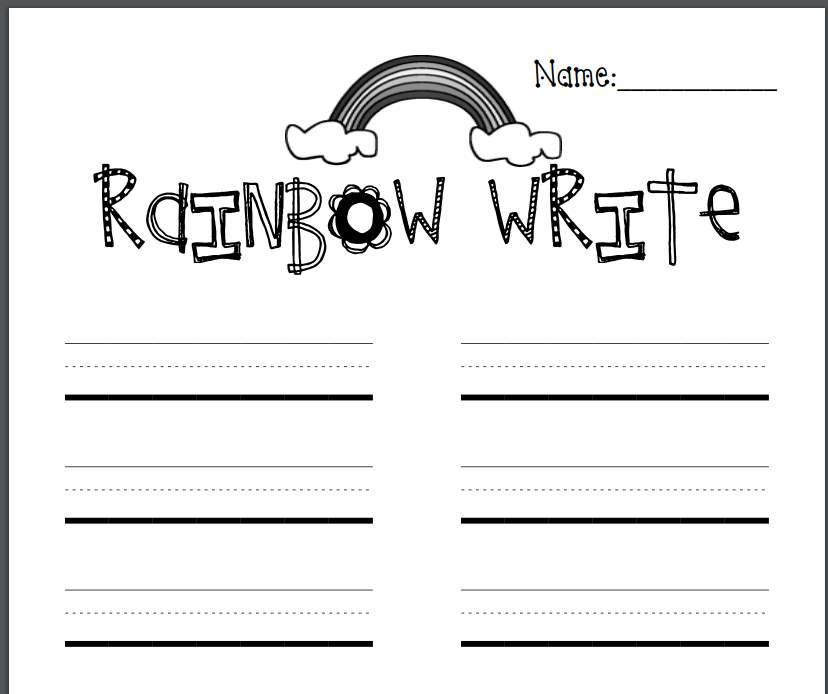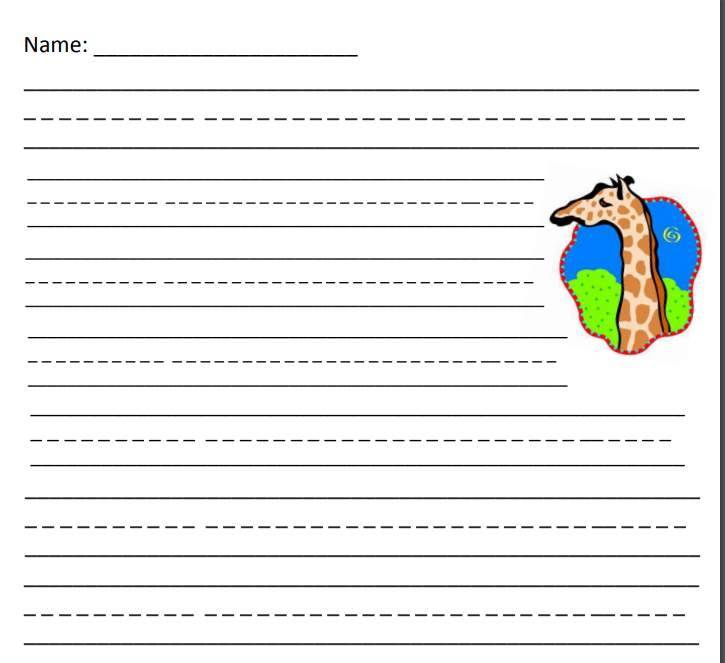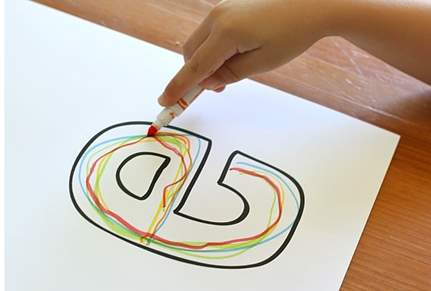Children in Small Groups and Whole Group Activities
| ✅ Paper Type: Free Essay | ✅ Subject: Childcare |
| ✅ Wordcount: 2657 words | ✅ Published: 18th May 2020 |
1. Exploratory Play-children learn through interactions with one another and play is a wonderful way for children to do this. One form of play is exploratory play. Which are activities that children will carry out firsthand investigations of people, places, objects
and events. These activities may be open ended experiences, but children will learn on how to explore and what to explore. Exploratory play allows children to learn about items that interest them, by doing this in a purposeful and creative environment. This type of play gives the children a way to discover new information while they are investigating their surroundings.
Exploratory play promotes the following for young children:
It will stimulate their brain connections, it will build on their early cognitive development, it will help with problem solving skills, and will build the child’s self- esteem up and it will also build their self-confidence up. Most of all it will build their critical thinking skills up. One con of this type of play is safety for the child. Making sure, that the area is safe for exploratory play, allowing the child to feel safe in the area of play. Especially when the play is outside. When teachers are introducing exploratory play to students, they need to make sure that the play will stimulate the children’s interest and by doing that they will need to provide activities that include sensory involvement.
2. Guided Discovery-
Guided discovery can be any type of activity that teachers create. It also is a teaching strategy that is used to introduce materials in the classroom. The major role of guided discovery is to introduce new concepts and excitement about the classroom resources. By having guided discovery, it provides opportunities to introduce vocabulary, let the children show their prior knowledge regarding the topic and to teach responsible use of the materials that they are using. By using this technique, it will give the children excitement and will generate new skills about learning something new. A fun way to teach is get the students interested in the material that you have presented to them. You can create a mystery about the materials, also by using a different tone of voice when you are presenting the materials to the children will catch their attention. A great way to build a common knowledge base is to ask the students open ended questions. And to encourage them to think about their past experiences with the material and to share their current observations. Some questions could be what clues do you see? What do you know about the items? Open ended questions are the heart of guided discovery. When asking students these questions we are looking for reasoned, relevant responses rather than the correct answer. A con may be when a child gets off track and the teacher will have to redirect the student to get back on track. Guided discovery helps have a deep impact on the child’s learning. It gives them the opportunities to stretch their thinking and work independently. The most important aspect is that the children are at the center of the process. “The Guided discovery model helps students to strengthen and increase their own confidence with the discovery processes themselves. Thus, able to raise the spirt of student learning. So that students have a stronger motivation to learn." (Supriadi,Syazali & Lestari; 2018).
3. Problem Solving.
Problem Savings activities are to enhance the children’s thinking and learning, so of the best problems to give the students are multi-sensory, because they allow the students to gather information and they could have one or more possible solutions. All problems that are given to the children to solve are allowing the children to observe, analyze, synthesize and evaluate events, information and ideas. This allows the children to be able to construct new ideas. When providing a problem-solving activity to your students, you will need to address the following information.
Observing- Children will observe, question and identify a problem. Gathering information, they will make predictions and will construct explanations.
Experimenting- the children will take action, test their ideas and observe.
Concluding-they will reflect on the outcome., develop alternative explanations and make plans for further experiments.
Communicating Results- they will talk about what happened, record data.
Keep in mind that sometimes these types of activities can take several days to finish. One con is that a student that needs to have laid out, directed instruction, this type of setting may not work. Because there is a lot of freedom in this type of activity and some students need structure in their learning.
4. Discussions-
Discussions include conversational give and take, listening as well as speaking and opportunities to share ideas. When you are involved in an early childhood setting, teachers will talk to students, and students will talk to teachers and other classmates. These interactions can be done in a group setting or Small group. Discussions can take form in a class meeting, or a brainstorming session or even when the teacher will have breakout sessions. For example, turn and talk to your partner regarding a a topic they the whole class talked about. During discussion you will be able to hear talking, listening, commenting and posing ideas. A con regarding discussions is that a child may not like to talk and just does not feel comfortable doing so. Or a child talks to much and never lets the other children get their turn or time to talk.
5. Demonstrations-
This is activities in which children learn how to do something through purposeful modeling by someone else. Children learn by watching others and imitating others. In an early childhood setting it is very important to demonstrate to students on how to play with a new game or how to build with a new set of blocks. This helps the child understand that they have guidelines that they must follow to properly play or use the equipment. If you are showing the students on how to color a map and you want them to only use certain crayons and certain colors. You would demonstrate the steps on how it should be done. But also show what they should not do also.
Get Help With Your Essay
If you need assistance with writing your essay, our professional essay writing service is here to help!
Find out more about our Essay Writing Service
6. Direct instruction- adults will primarily determine the goals, content and process of the activities in order to teach children facts. There are several items that children will not learn through self-discovery, children need to have direct instruction from someone to learn what to do or how to do something. Teachers will use direct instruction to teach children facts or routines that cannot be discovered on their own. This is a way to gain the children’s attention and show them how it is done. For an example doing a main problem, there can be steps on how to set it up. Showing and talking about the steps will teach the child how to perform the task on hand. Studies have suggested that, “in mixed method classrooms, the directed instruction approach is most effective for academic skills, however within the child-centered approach, guided play may be more effective than free play for promoting academic skills.” (Goble, 2014).
Design for Classroom Centers.
The first center will be the Writing Center.
The writing center will have a small roundtable with about three chairs, because having more than three children at this center they tend to want to play around. There will be different types of writing materials for them to use. Also, I would have lined themed paper for the students to use. I have noticed that when the paper has pictures for them to color, they like to use that type of paper. They can use the lined paper for writing their name or sight words on it.


Rainbow Name Writing.
Print out block letters with the child’s name. Have markers and crayons available for the students to use. First take their hand with the markers in it and guide their hand numerous times around the letter to outline it. Once they have finished with one color let them grab a different color and let them repeat the process. Make sure that the child can follow each line and then they can independently do the activity by themselves. The children are learning the letters that are in their name and the alphabet in this activity. The students loved this activity because they were able to use markers. The markers that they used were the washable ones, so if it got on their hands it was an easy clean up. I would say that most of the students were able to stay within the lines. By doing this activity it helps the students master holding a marker correctly. When helping the students that were tracing their names I would call out a letter that was in there name and say do you know you have an “S” in your name, can you show me where the letter “S” is. Then once they found the letter, I would say to them nice job finding that letter. This is another activity that can be done in a kindergarten setting. Another great activity or routine to have in the classroom is a Sign in Sheet at the door in the am and pm. When the child arrives, have them sign their name in and when they leave for the day the student will need to sign their name out. By the end of the year the students will have mastered writing down their name.
Rainbow Name Writing

Art Center.
I would have only about four students at this center at a time. Each day there would be a different activity for them to do. For one activity, I would have pictures of the current letter we are learning that week. For example, if the letter is “B” then I would cut out pictures of a bear, bee, and dog. That is our school’s mascot. Then they would color each picture and then glue them on construction paper. Once that is finished, they will then use the letter stamp set and put the letter “B” all over the paper. They are connecting the picture with the letter. They are also learning to glue. Talk to the students regarding keeping the area clean and messy.
Math Center.
Mathematic is the foundation of comparing items. It is important to have materials that facilitate observation for the children. For instance, scaffold is a way for children to organize items into different patterns and similarities. It is important to have different types of items with varied colors, shapes, textures and materials. Such as wood, plastic, and Metal. Provide a balance of open-ended materials, for example Lego, blocks, and self-correcting items such as puzzles and simple games. Have math tubes that will house each of the materials separate. And have each of the tubs labeled so the child can easily see what they have picked out. Only allow 2 to 5 tubs on the floor and do a rotation of 5 groups. They will play and use each tub for about 5 to 8 minutes and then have the children move to a new tube.
I Would have the students pick a book about numbers that is in the tub and they can also pull the plastic numbers out and then the child can match the numbers with the book. This activity gets the child reading and using numbers.

Advantages and Disadvantages of Story Time in Large Groups and in Small Groups.
Teaching in Small Groups.
When working in small groups the groups are well planned out on what activity that the group will be doing and how it will be carried out. The small group is adult-guided, this is when the adult determines the content, approach and the direction of the activity. A small group instruction is more effective than whole group instruction because teachers can differentiate instruction to meet each student's needs. They can respond to the child’s reading more effectively. Small group lessons can be designed to focus on reading, writing, listening and speaking skills. Another great aspect of working in small groups is being able to work with the students on word study. For example, they can practice their word knowledge and be able to decode unfamiliar words while reading. In a small group setting a teacher will be able to assess the student's strengths and needs. “Whole-group lessons can often be too challenging for students with the least literacy knowledge, and too easy for students with the most literacy knowledge. (Williams, et.2009). Sometimes the whole-group approach does not always meet the student's needs.
Whole Class Instruction.
Whole class reading instruction provides all students with a shared experience. When planning a group, there are four types of group times for the whole group to be able to work. They are the following:
Opening of group- this is to signal to the children that it's the beginning of group time.
Body of group- this is the whole group instruction time. The whole class is involved.
Closing of group-When the teacher summarizes the activity and then guides the children into the next portion.
Transitions- this will link an activity with the next activity or step. When teachers are preferring small groups, it gives them the opportunity to model skills and to create a dynamic level of enthusiasms. When children are read to it gives them an opportunity to collaborate with one another and think about what was just read to them. Whole class reading is most beneficial in both reading and writing workshops. Large group also gives the students the ability to share what they were just taught. Students learn so much from each other through sharing. Some students will volunteer to shame and some days the teacher will need to call on the students to show what they have found interesting in the story. When reading a book to the class, you can have class discussions on the main idea, compare and contrast, charters and discuss cause and effect in the story.
References:
- Supriadi, N., Syazali, M., Lestari, B. D., Dewi, E. S., Utami, L. F., & Mardani, L. A. (2018). The utilization of project based learning and guided discovery learning: Effective methods to improve students' mathematics ability. Al-Ta'Lim Journal, 25(3), 262-271. doi:http://dx.doi.org/10.15548/jt.v25i3.487
- Goble, P. (2014). Examining child-centered and direct instruction approaches to early education (Order No. 3632272). Available from ProQuest Central. (1566951733). Retrieved from https://search.proquest.com/docview/1566951733?accountid=34574
- Williams, C., Phillips-Birdsong, C., Hufnagel, K., Hungler, D., & Lundstrom, R.P. (2009). Word study instruction in the K–2 classroom. The Reading Teacher, 62(7), 570-578.
Cite This Work
To export a reference to this article please select a referencing stye below:
Related Services
View allDMCA / Removal Request
If you are the original writer of this essay and no longer wish to have your work published on UKEssays.com then please click the following link to email our support team::
Request essay removal


